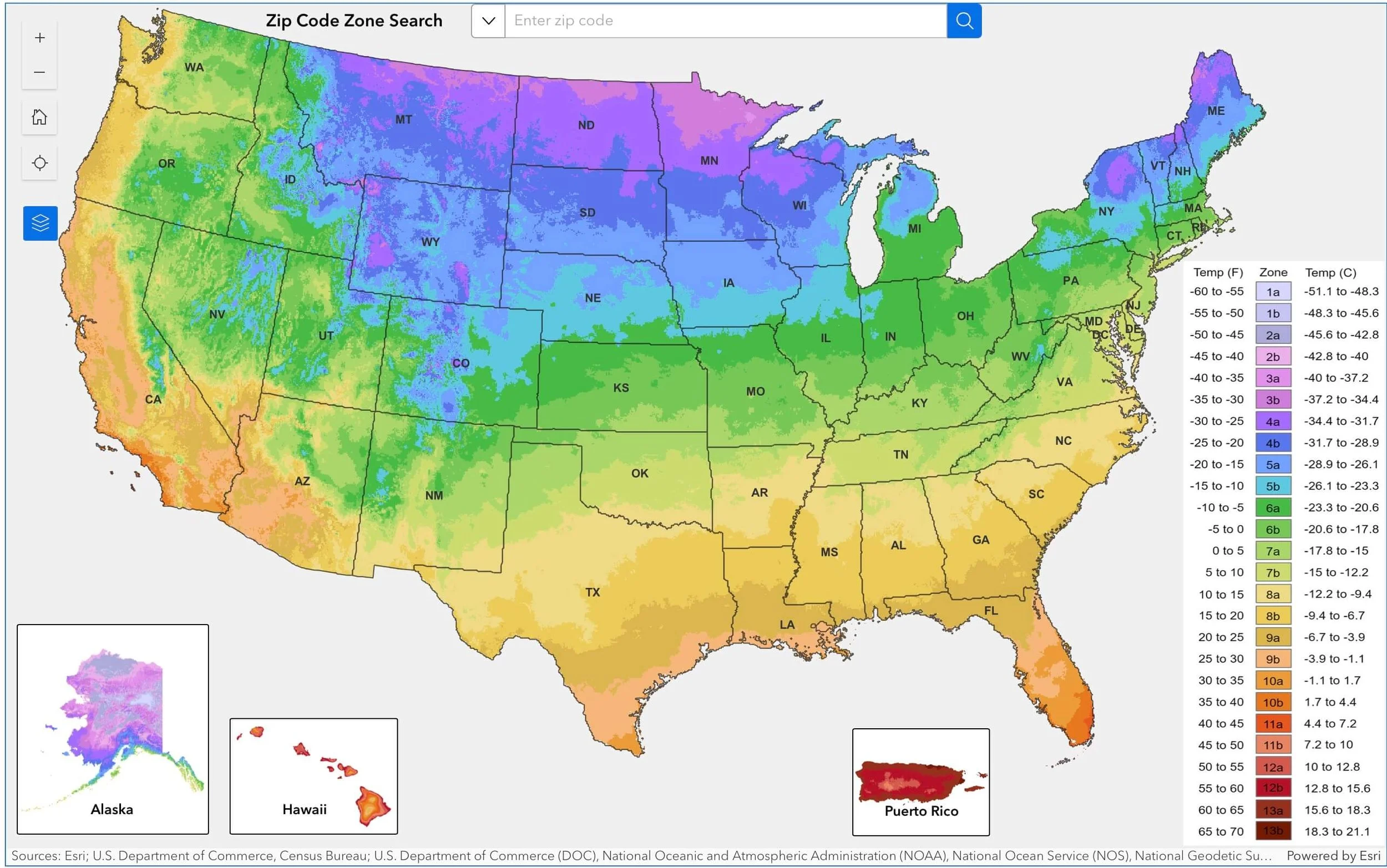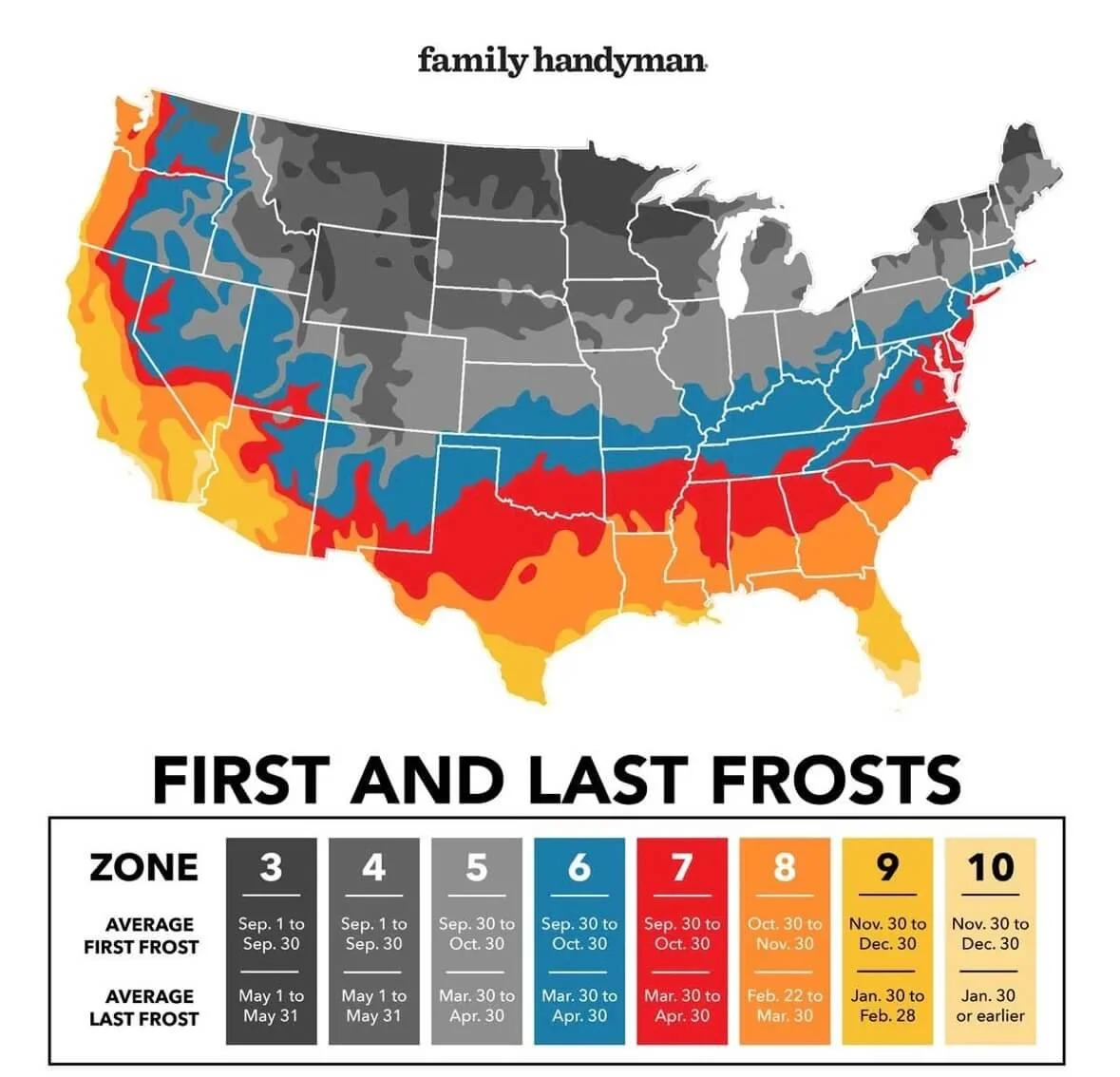Gardening 101- 3 must know basics
Hello students! If you’re here it means you’ve enrolled in my gardening 101 course. Thank you for trusting me with your time! This first module is “Intro to Gardening” where we will be covering the very basics you’ll need to get started with your very own kitchen garden. The first objective in this module covers the 3 key pieces of information that are crucial to every garden:hardiness zone
first & last frost dates
chill hours
Once you have this info you will be able to start planning, shopping, and preparing for a successful growing seasonHardiness Zone
This is a zoned map created by the USDA that averages out temperatures in your area so that you know which plants will grow well in your zone. There are a total of 13 zones, 1 being the coldest (Alaska) and 13 being the hottest (Puerto Rico & Hawaii). Each zone is then split into sub zones A or B. It is important to know your zone so that when youre shopping for a plant, tree, or shrub you can check to see if it will thrive with you. For example, I'm shopping for blueberry bushes and paying attention I choose a variety that can handle my warm summers in zone 9. The last thing I want to do is grab a blueberry that is meant for zones 4-8 only and watch it get fried in the sun here when its 105 degrees F in July.first & last frost dates
Number 2 on crucial piece of information you need to know is your area's first & last frost dates. These are the average dates of last light freeze going into spring and then into fall/winter. These recommended dates will determine when you can get seeds and seedlings outside in weather that they will survive in. Your first frost date will give you an idea of when you should be bringing your sensitive plants and potted trees indoors for safe keeping. It will look like this, type your zip code in the search bar and youl’ll get your dates
Remember to keep in mind that these dates are RECOMMENDATIONS. Weather can change and seasons can fluctuate earler/later than anticipated. Keep an eye on your local weather forecasts for frost advisories up to and around your predicted frost datesChill hours
Annual chill hours are especially crucial to know if you are wanting to add fruit or nut trees to your garden. This is the number of hours a crop needs to be exposed to temperature at or below 45 degrees F. The number will vary depending on the species so do your research for a tree that is going to not only survive your climate but thrive in it. To find your annual chill hours head to google (or your favorite search engine) and type "annual chill hours in (your county)". You will find websites specific to your region that can tell you this information.My friends over at Homestead & Chill have a great post that goes into details about chill hours that I recommend you check out if fruit trees are on your wish list. They also include a great chart to reference of the most common fruiting trees.For example, I live in an area that gets on average 680 total chill hours in a year and as a result cannot grow Honey Crisp apples cus they need up to 1,000 chill hours. Instead I'm looking to add a Pink Lady apple tree cus that has a much lower chill hour threshold.If you found that you live in a hardy zone (1-8) and are bummed that you might not be able to grow tropical plants that thrive in zones 9-13 or wish you had a longer growing season, dont be! There are ways to work around it. You can consider a greenhouse that will insulate your plants and keep temps much warmer than the outside. Raised bed hoop covers also provide cozy temps for crops. Starting seeds indoors under grow lights in a controlled environment are also a great option. You can even maintain a kitchen garden inside year round if you have the space for a modern system.Now to complete your first assignment, head on back to instagram and leave your comment with your:
1) growing zone 2) last frost date 3) chill hours
I'll be over there waiting!




